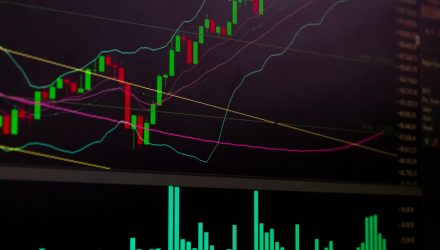The VanEck Morningstar ESG Moat ETF (CBOE:MOTE) is just over two months old, but it’s not a stretch to say that this is a credible, compelling addition to the burgeoning landscape of environmental, social, and governance (ESG) exchange traded funds.
It helps that MOTE is the ESG answer to a well-established ETF — the VanEck Vectors Morningstar Wide Moat ETF (MOAT). However, MOTE will be able to stand on its own merits because it arrives as investors are longing for newer ESG concepts and putting capital to work to that effect.
“Global ESG assets are on track to exceed $53 trillion by 2025, according to Bloomberg Intelligence, representing more than a third of the $140.5 trillion in projected total assets under management,” notes deVere Group.
MOTE follows the Morningstar US Sustainability Moat Focus Index, which attempts to identify wide moat companies trading at attractive valuations while sporting impressive ESG credentials. In other words, MOTE investors potentially get three benefits under one umbrella: deep competitive advantages, attractive valuations, and ESG.
Obviously, MOTE is a new ETF, so judging it based on inflows isn’t relevant as of yet. However, it could be a well-timed addition to this category because advisors and investors are increasingly comfortable embracing ESG funds.
“Previously, ESG investments were often considered a ‘quirk’ or ‘nice to have,’” said deVere Group CEO Nigel Green. “But now we believe that they should be a part of everyone’s investment portfolio for several key reasons.”
Proving that the combination of wide moats and solid ESG scores is exclusive territory, MOTE is a concentrated ETF with just 60 holdings. However, concentration risk is mitigated to some extent because none of the fund’s components exceed a weight of 3.22%, and the top 10 holdings combine for a tolerable 29.43%.
Not surprisingly, MOTE is overweight on tech stocks at an allocation of 31.1%. The industrial and consumer discretionary sectors combine for 30%, with financial services and consumer staples combining for 21.7%. There are no energy, real estate, or utilities stocks in MOTE. Overall, the fund could resonate with ESG-hungry investors.
“ESG represents a revolution of investment strategy itself. A seismic shift has occurred in corporate behavior. How firms approach ESG factors and the value they place on them compared to other considerations has already changed forever. The ESG themes are already embedded in the global economy as this is only set to grow in the years to come – and, of course, investors should embrace the concept of having early advantage,” adds Green.
For more news, information, and strategy, visit the Beyond Basic Beta Channel.
The opinions and forecasts expressed herein are solely those of Tom Lydon, and may not actually come to pass. Information on this site should not be used or construed as an offer to sell, a solicitation of an offer to buy, or a recommendation for any product.







